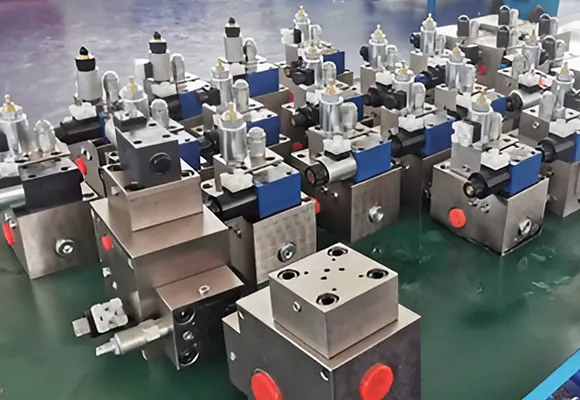Manifold Valves In Hydraulic Systems: Functional Analysis
A hydraulic manifold serves as a crucial element in hydraulic systems, functioning as a block with pressure inlets,
service ports, and low-pressure outlets for attaching various valves. This design reduces the number of connections, minimizing potential leaks.
The evolution of manifold valves has led to sophisticated variations,
including monoblock directional control valves with relief, anti-cavitation, and service line relief features.
Placing single valves on a base manifold to reduce pipework. While not the most compact, this method simplifies installation.
Cartridge valves further streamline Hydraulic Systems by integrating features such as surface-mounted or thread-in designs and pressure and flow controls.
Key Advantages of hydraulic manifold valves include:
Shorter Flow Pathways:
Enhances energy efficiency by reducing pressure drop and heat fluctuations.
Fewer Connections:
Reduces installation costs, minimizes wear, and lowers the risk of oil leaks.
Universal Porting:
Enhances compatibility with a variety of components, improving overall system layout.
Despite these advantages, careful attention to machining accuracy and material integrity is essential to prevent leaks in complex systems.
Troubleshooting intricate hydraulic manifolds can be challenging, often requiring valve swapping between manifolds to eliminate internal leak possibilities.
In summary, hydraulic manifolad valves, particularly those with cartridge valves, offer efficiency gains, cost savings, and a more compact design.
However, precision is crucial in handling complex systems to avoid potential issues and simplify troubleshooting when problems arise.
Saivs brand
- AA6VM/A6VM Piston Variable Hydraulic Motor
- AZPU series Rexroth Gear Pumps
- Mobile Table Lift
- Stainless steel high pressure hydraulic cylinder
- Hydraulic cylinders for agricultural and forestry machinery
- Tyre Changer
- Rexroth 4wrle10/16/25/35 series servo selonoid valve
- T67 Series High Performance Vane Pumps
- Gear pumps sertes nsh50a
- Single Mast High Altitude Working Vehicle
